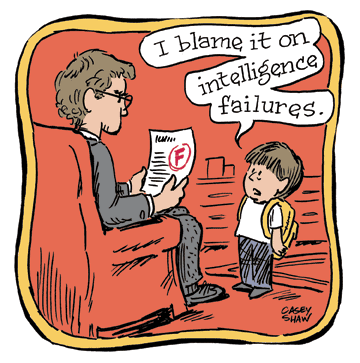Sternberg's Triarchic Theory
There are probably as many definitions of intelligence as there are experts who study it. However, intelligence is more or less the ability to learn. Robert Sternberg has proposed a theory that describes specific types of intelligence. He developed the triarchic theory of intelligence (Sternberg 2010, 2012). His theory states that intelligence comes in three forms; analytical, creative and practical intelligence. Analytical intelligence is the ability to analyze, judge and compare and contrast. A person who has analytical intelligence would do rather well on an IQ test for example. Creative intelligence includes the ability to create, invent, originate and imagine different concepts. An example of a person with creative intelligence is someone who can solve problems creatively, rather than solving them the conventional way. Lastly, practical intelligence involves the ability to apply and put ideas into practice. Some examples of people with practical intelligence are students who drop out of high school or college that do well in real life. One could almost say that people with "street smarts" has practical intelligence.
Sternberg says that students with these different types of intelligences perform differently in the classroom. For example, an analytical student would do well in a classroom in which the teacher lectures and gives objective tests and are at the top of their class. A creative student would give unique answers to conventional questions, and may not conform to the expectations that teachers have about how the assignment should be done. Students with practical skills may not do that well in school classes such as math or a foreign language, but their social skills may allow them to become successful businessmen in the future. It is important for classroom instruction to give students the opportunity to learn through all three types of intelligence. As a teacher it is important to apply the knowledge of different types of intelligences and apply this in the classroom to enhance student learning (Standard 2.1)
In my future classroom, I will have to take all of this into consideration. It is important to tend to the needs to every student in the classroom and their different types of learning abilities. Instead of assigning one specific assignment to the entire class, I will give my students an opportunity to choose their own assignment and give them the option to be independent learners. For example, if the topic is conjugating the French verb "Faire" I could allow for my students to choose from a variety of assignment options. One option could be to have a student do a PAL sheet. What a PAL sheet stands for is "Practice and Learn" students would simply fill an entire piece of paper front and back with the correct conjugation of the verb faire. This would be the ideal choice for a person with an analytical intelligence. The directions are simple and straightforward. He or she would choose to complete this assignment because it is a more technically focused assignment. The second option would be to create some sort of visual project incorporating the conjugation of the verb faire. This option in itself has many options within it, the reason being because a creatively intelligent person would like to have freedom to be creative and choose something that he or she is interested in whether that is drawing a picture or coming up with a PowerPoint presentation. The last option would be something similar to a creative project. However this option could be something like an oral presentation to the classroom. A practical person might like this option because it allows them to break the barrier of written work that holds them back and allows them to show that they understand the subject matter in a different way. By allowing my students the freedom to choose a project based on their intelligences and their preferences, it teaches them to be independent learners, to create a higher order thinking and allows them to grow as individual learners (Standard 2.5)
